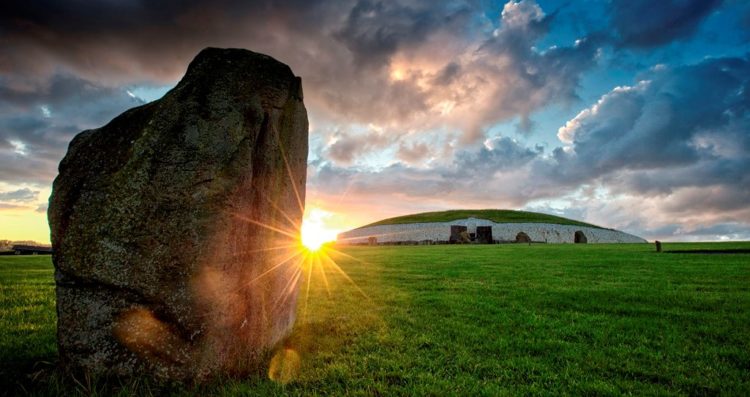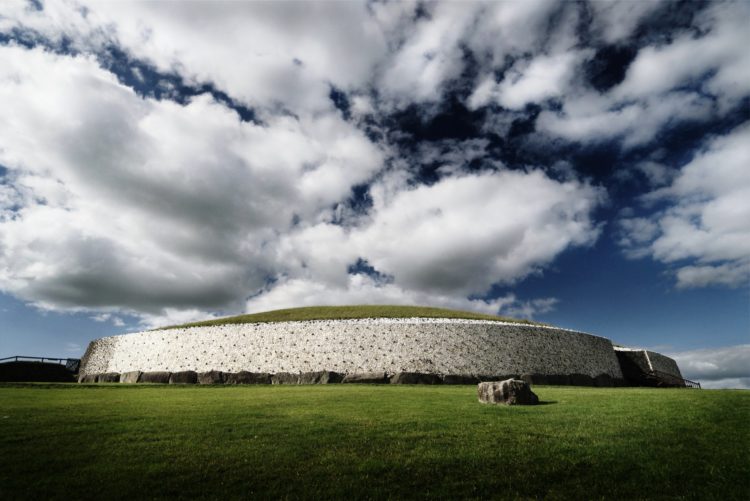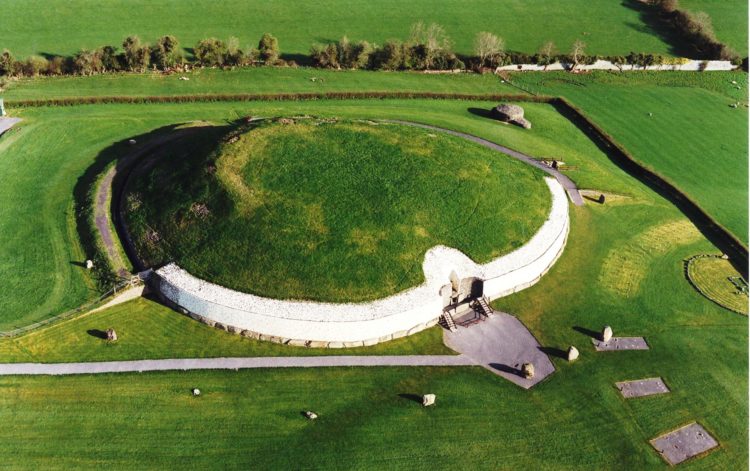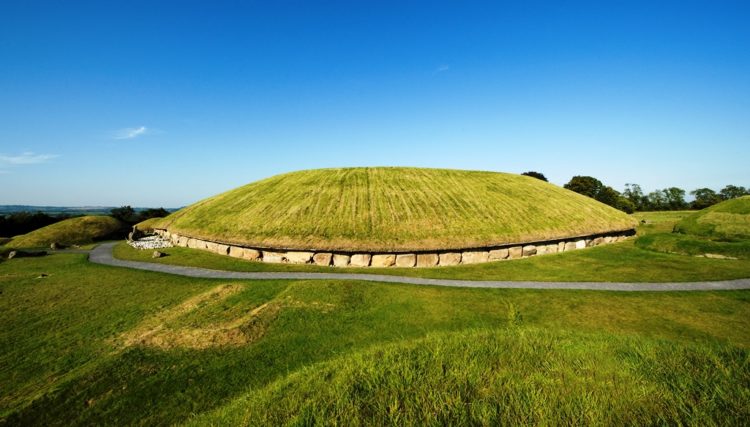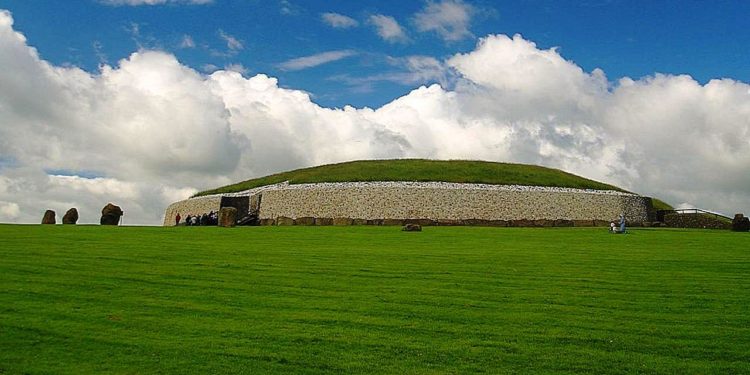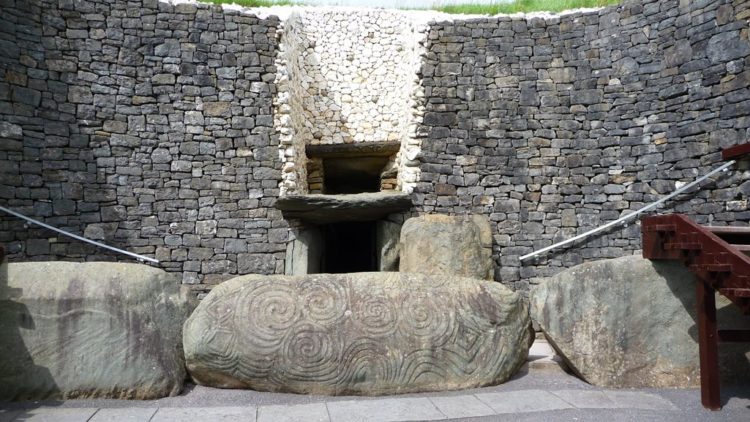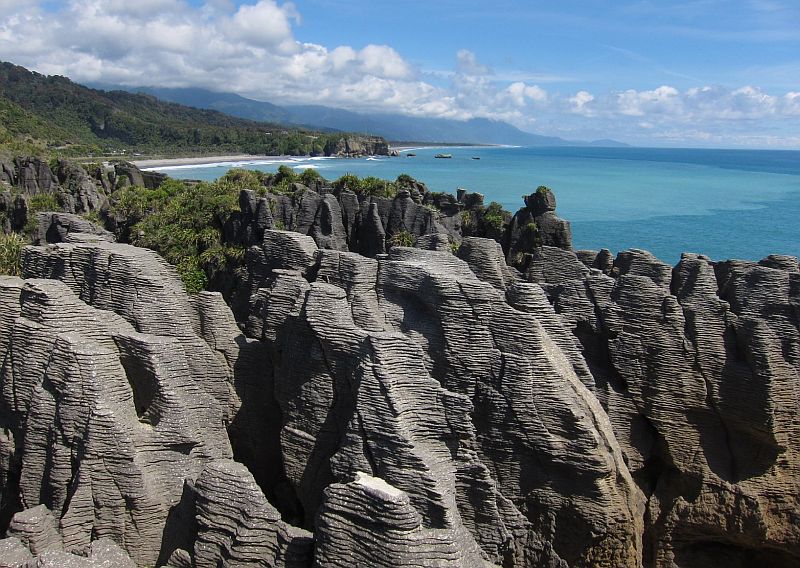Newgrange; is a famous prehistoric monument in Ireland, located one kilometer north of the River Boyne. The Stone Age monument was built somewhere Neolithic period around 3000 BC to 2500 BC, making it older than English Stonehenge and Egyptian Pyramids.
The Newgrange is a large circular mound with a stone passageway and interior chambers. The Newgrange is actually a man-made mound 85 meters in diameter and 13.5 meters high, along with a 19-meter passage that leads to a chamber with three alcoves.
The kidney-shaped mound is ringed by “Kerbstones” engraved with artwork, and covered an area of more than one acre. The exact purpose of Newgrange is not confirmed but speculated that it had been used for religious activities, aligned with the rising sun, which lights passes through the chamber on the winter solstice.
Therefore, maybe a more fitting classification is a place of astrological, spiritual, religious, and ceremonial importance. The Newgrange is relatively a modern name, which means New Grange, as outlying farms were recognized known as granges. The Newgrange is the most famous monument which is a part of the Brú na Bóinne UNESCO World Heritage Site, having great similarities with other Neolithic constructions in Western Europe, just as “Maeshowe” in Orkney, Scotland, and the “Bryn Celli Ddu” in Wales.
The majority of Neolithic people were farmers, growing crops, and raising animals, and their tools would have been made out of stone, wood, antler, and bones. It is projected; more than 300 labor force participated in the construction of Passage Tomb at Newgrange for 20 years. However, Newgrange is just a passage tomb that was sealed for many centuries and remained in Irish mythology and folklore.
In the 1970s the front of the monument was reconstructed, causing a lot of controversial buzzes and disputes. These days, Newgrange is one of the most popular tourist sites, regarded prehistorian as the great national monument and one of the most prominent megalithic structures in Ireland and Europe. There are few proofs that Newgrange was used as a burial tomb, and the roof of the inner chamber is of corbelled construction, it hasn’t leaked in 5000 years.
The estimated weight of a circular is more than 200,000 tonnes in total; with a flat-topped cairn of almost 0.5 hectares. The Newgrange is made up of water-rolled stones, the terraces of the River Boyne, and round granite boulders from the Mourne.
Newgrange contains various examples of abstract Neolithic rock art carved onto it which provide decoration They are also marked by wide differences in style and the skill-level, and one of the most notable examples of art at Newgrange is the triskele-like features found on the entrance stone. It has been described as “one of the most famous stones in the entire repertory of megalithic art.
In addition, different archaeologists have guessed as to the meaning of the decoration, supposed them to have some sort of symbolic purpose, as some of the carvings had been in places that would not have been noticeable, such as at the bottom of the orthostatic slabs below ground level.
Moreover, excavations have revealed deposits of both burnt and unburnt human bones in the passage, signifying human corpses were actually placed within it, even some of which had been cremated. Besides, various grave goods were deposited alongside the bodies inside the passage. Furthermore, excavations that were taken place in the late 1960s revealed seven “marbles”, four pendants, two beads, a used flint flake, a bone chisel, and fragments of bone pins and points. Read More – The Standing Stones of Stenness
